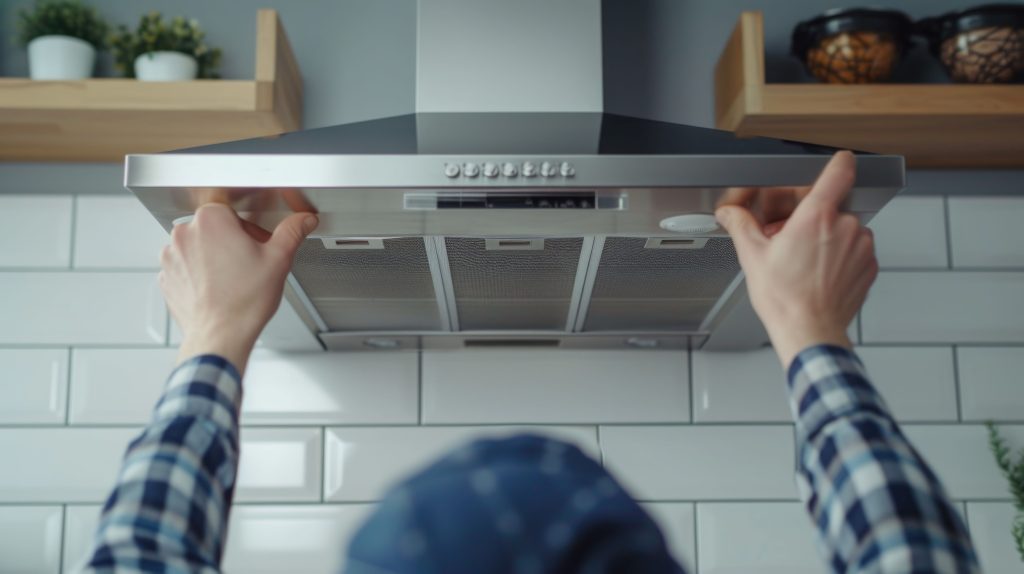
Picking a range hood isn’t just a minor decision when setting up your kitchen. It’s one of those oddly specific pieces of equipment that can either make the whole space work smoothly or leave you battling steam clouds and lingering odors every time you cook. If you’re still trying to figure out how to pick the right size range hood, let’s dig into it — no fluff, just what actually matters.
I’ve made this mistake before — measured wrong, bought the wrong type — and paid for it with burned onions and a very smoky Sunday brunch.
Width First — Then Everything Else
The width of the range hood is the first thing you need to get right. That part’s non-negotiable. A common mistake is matching the hood to the exact width of the cooktop. Technically, that works. But practically? You’re setting yourself up for weak performance.
Here’s what works better:
- Standard range (30 inches): Go for a hood that’s 36 inches
- Larger cooktops (36–48 inches): Match or slightly exceed in width
- Minimum? Same width as the range. Ideal? Add 3 inches on each side
That slight overhang helps the hood catch more smoke, grease, and heat — the stuff that tries to escape into your kitchen while you’re busy flipping steaks or boiling pasta.
Think Bigger Than Just Width
Once you’ve nailed down the width, you’ve got to think about total size — depth, height, and airflow power. Exhaust systems for the kitchen aren’t one-size-fits-all. If you treat them that way, you’ll end up frustrated.
You’ll want to look at:
- Depth: Hood should cover front burners. Around 20 inches is ideal.
- Mounting height: 24–30 inches above the cooktop for gas; electric can go a bit lower.
- Airflow (CFM): For regular cooking, 300 CFM is the bare minimum. Go higher if you love cooking with high heat or grease-heavy recipes.
Especially in kitchens with tall ceilings or open layouts, stronger airflow keeps the space feeling clean and breathable.
How You Cook Changes the Game
Your kitchen might be simple, or it might be your personal food lab. That changes what kind of hood you need. A quiet microwave vent fan might work fine for oatmeal and toast. But if you’re pan-searing, grilling, or deep-frying, your exhaust system has to be tougher.
Break it down like this:
- Light cooking (boil, steam, reheat): Basic size and airflow
- Everyday meals (sauté, roast, bake): Medium width, stronger CFM
- Heavy-duty cooking (frying, wok, meat searing): Oversized hood, high CFM, maximum capture
It’s not about overbuying — it’s about matching your setup to how you really use your kitchen.
Style vs. Function — Pick Both
A stylish hood looks great, but if it doesn’t pull air well, what’s the point? Your kitchen doesn’t need a showpiece that fails at its one job. Focus on how it functions with your layout.
You’ve got a few solid styles to choose from:
- Wall-mounted: The go-to for most homes. Reliable and easy to size.
- Under-cabinet: Tidy and space-saving — great for small kitchens.
- Island: Needs to be wider and stronger since it’s exposed on all sides.
Whatever you go with, it needs to complement your other exhaust systems for the kitchen, not just hang there looking modern.
Measure Twice, Regret Never
If I’ve learned anything from redoing kitchens, it’s this: the hood you think “looks about right” probably isn’t. Measure carefully, match the hood to your actual cooking habits, and don’t fall for the cheapest deal in the aisle.
Your kitchen deserves better. You’re in there every day — maybe all day. Make sure your range hood actually keeps the air clean, smells out, and heat under control.
Because once you get the right fit? Cooking gets easier, cleaner, and way more enjoyable.